Some games try to shock you with grotesque scenes, body horror, jump scares, loud noises, and constant chaos on screen, the kind that completely overwhelm your senses from every direction. And then there are the other ones. The ones that somehow manage to hit you just as hard, but in a quiet, subtle way. Where every sound feels carefully chosen, every moment carefully paced. No loud voices, no over-explaining, no distractions. Just pure atmosphere. These are the games that don’t even need to be played from the first or third person to pull you in — they rely entirely on what they make you feel. Little Nightmares has always been one of those. A franchise from Bandai Namco, originally created by Tarsier Studios, is dark, twisted, and yet somehow beautiful at the same time. The first game followed the haunting adventures of a small girl named Six, who wandered through her nightmares one step at a time.
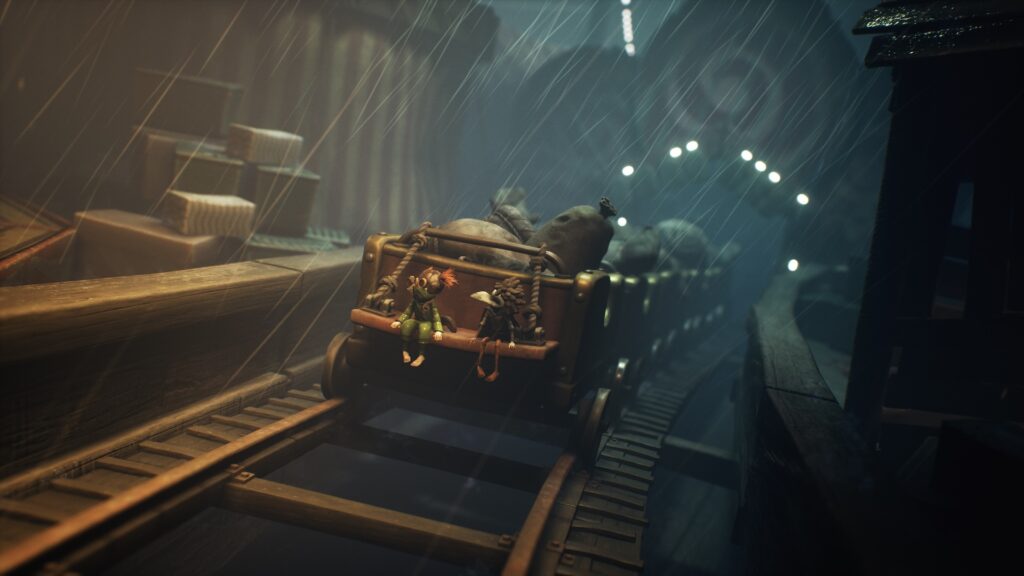
Now the torch has been passed to a new studio, Supermassive Games, the team known for horror hits like Until Dawn, The Dark Pictures Anthology, and The Quarry. Naturally, I was curious: can Supermassive live up to the eerie brilliance of Tarsier’s 2.5D world? Can they really keep that same fragile balance of fear and beauty? Let’s see.
This time around, Little Nightmares III follows two main characters, Low and Alone, two lost kids who stumble into a world that feels like a dream someone forgot to finish. Everything’s distorted, beautiful, and terrifying at once — cities made of dust, whispering factories, carnivals that lost their music long ago. The two of them journey through The Nowhere, a place that doesn’t seem to know whether it’s real or just pretending to be. Every new location looks like a nightmare, trying to trick you with beauty before it devours you. In Necropolis, a city of shadows and wind, they encounter creatures that look like they were born from someone’s childhood fears: a massive baby wandering around, desperate for attention; figures that move when you’re not looking; walls that seem to breathe. Everything here feels like a metaphor for growing up, for facing a world that crushes you long before you’re ready to understand it.
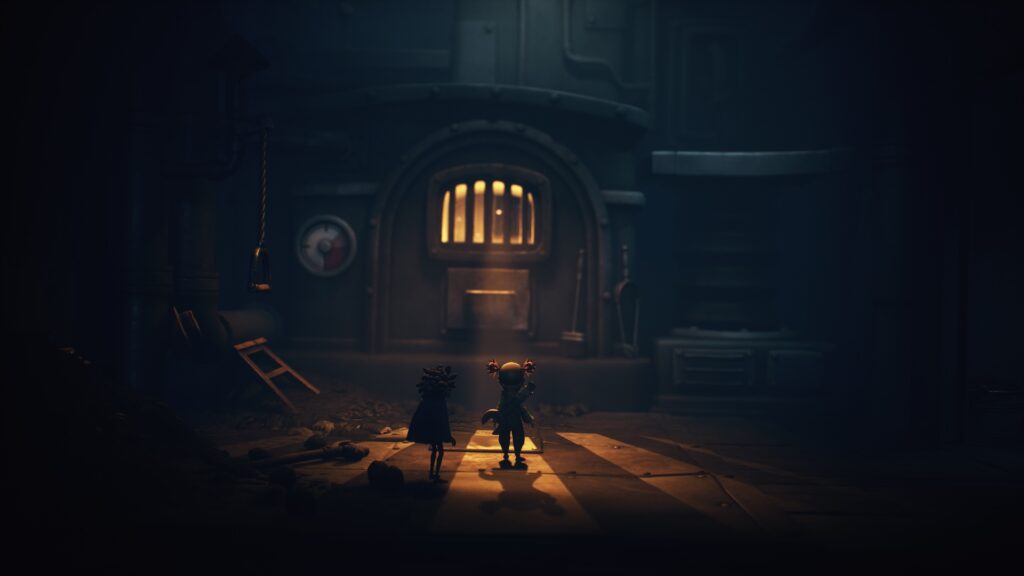
What Little Nightmares III does brilliantly is tell its story without words. Everything’s conveyed through silence and detail. Low carries a bow, Alone carries a wrench, and somehow, that alone tells you everything about who they are. He tries to defend himself, to fight back against what scares him, or maybe solve puzzles his own way. She tries to unlock, to pass through, to see what’s behind the barrier. Their relationship grows deeper and deeper without a single word spoken, as they move through a world that keeps testing them at every turn.
Every scene gives you that feeling that they’re not just running from monsters, but from their own shadows. Okay, maybe that’s just me overthinking it, but I swear, a couple of moments genuinely got under my skin. As everything gets darker and more abstract, you start wondering: Is there really a way out of The Nowhere, or are they just looping through one nightmare after another? And even while you’re asking yourself that, you can’t wait to see what the next nightmare looks like. That strange mix of anticipation and dread, you want to go forward, but you’re scared to move. Well, not scared, scared, but tense enough to grip the controller a little tighter. And every time you finish a level and step through that magical mirror into the next one, there’s this tiny sigh of relief, “Phew, I made it. Alright, let’s see what’s next.”
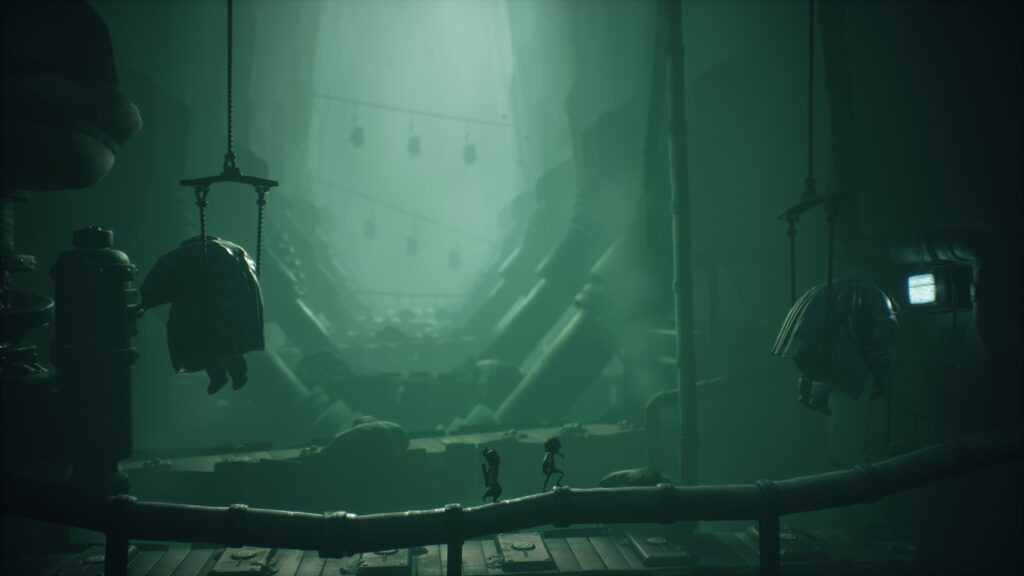
Every nightmare, every level, is crafted with absurd attention to detail. And when I say beautiful, I don’t mean sunshine and colors and happy tunes. I mean beautiful in that morbid, haunting way, decaying creatures lurking behind corners, bugs crawling across the floor, buzzing insects everywhere, twisted shapes that look both dead and alive. Everything’s horrifying and brutal, yet oddly charming at the same time. A lot of that charm comes from Low and Alone themselves — two small figures in a huge, terrifying world, but also from how that world is presented. The silence, the atmosphere, the weight of every shadow, it all just seeps under your skin. And if you’ve never played Little Nightmares before, that feeling grabs you fast. If you have played them, then you already know that once you start, you’ll want more nightmares. Strange thing to admit, but yeah… that’s how it goes.
If you’ve played the previous games, you know what to expect from the gameplay. It’s slow, deliberate, more about tension than speed. No fast combat, no flashy action scenes, except those moments when you’re desperately running away from something horrifying. The focus is on exploration and puzzles. Low and Alone rely heavily on each other, and that bond translates perfectly into how the game plays. Most puzzles can’t be solved alone, you’ll always need the other kid’s help. At the start, you choose who to control, Low or Alone, and once you choose, that’s who you’ll stick with until the end.
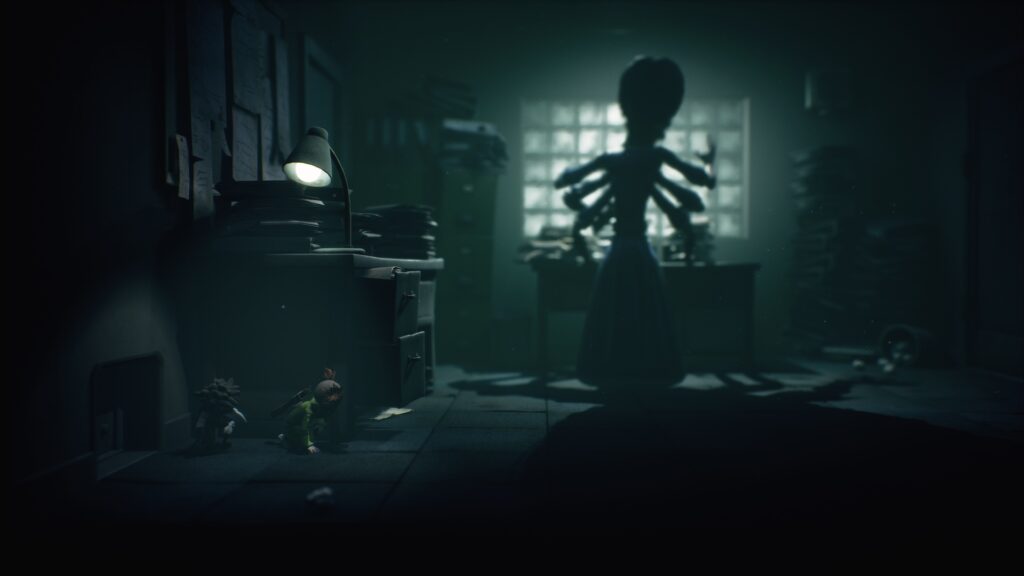
That choice affects how you approach the world. Low can do certain things Alone can’t, and vice versa. If you need help, you can call your partner by pressing Triangle on PS5 or Y on Xbox, and they’ll assist you with puzzles or obstacles. None of the puzzles are overly difficult, but a few do make you stop and think, which is honestly part of the charm. Nothing feels frustrating or unfair. It’s all about the experience, about the silent storytelling between these two kids rather than the challenge itself.
The puzzles are designed thoughtfully, not to annoy you, but to make you pay attention. Sometimes you’ll need to observe your surroundings closely, remember something from an earlier scene, or notice a small detail in the environment. And when everything clicks, there’s that satisfying “aha” moment where you realise how it all fits together. That’s one of the best parts, that little rush when a puzzle makes sense, right before you move on to the next twisted scene.
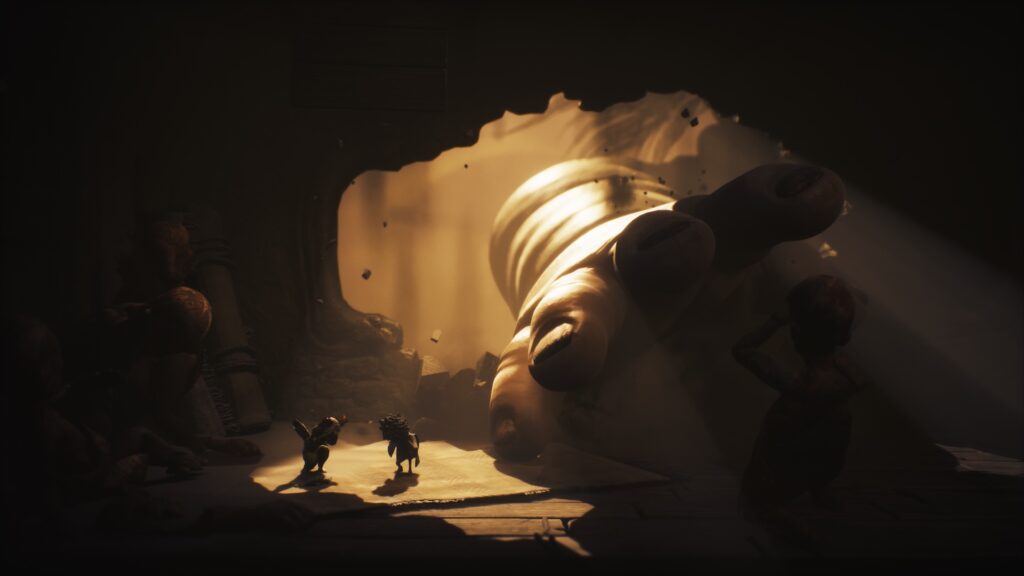
The game also has a multiplayer component, and honestly, that made me really happy. Finally, you can experience this morbidly sweet nightmare with someone else. However, Co-op is limited to online play only, there’s no local mode. At first, I was a bit disappointed, but I totally get why Supermassive made that choice. In this game, it’s crucial that each player has a full screen, not just half, because so many interactions depend on visibility and small environmental cues. Unlike Super Mario or similar co-op games, where players can share a screen and wander off a bit, that just wouldn’t work here. You need to see the whole scene in front of you — both for immersion and gameplay reasons.
Sure, local co-op might’ve worked if everything happened within one space, but Little Nightmares relies on exploration — wandering around, solving puzzles, often in separate areas. Sometimes, Alone has to hold something in place with her wrench while Low searches for switches or hidden passages to let her through. These moments happen constantly, and splitting the screen would completely ruin the atmosphere. So yeah, I get it. Logical choice. The good news is, there’s a “Friends Pass,” meaning you can invite anyone from your friends list to play with you — even if they don’t own the game. It’s the same system used in It Takes Two and LEGO Voyagers (you can check out that review, too, by the way).
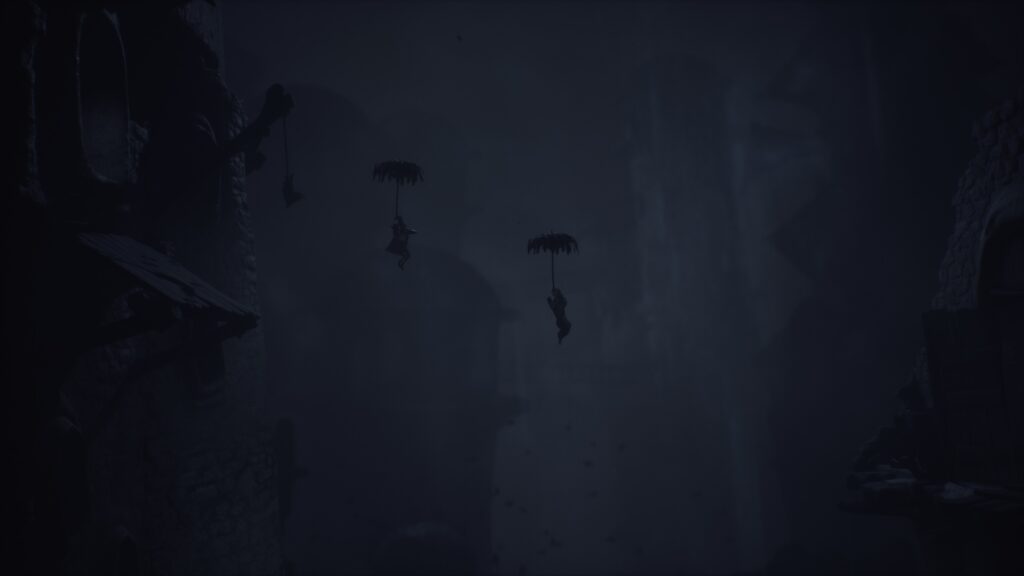
And co-op? It’s fantastic. Everything about it works. This is a game where silence dominates — no real dialogue, just eerie music and sound effects filling the air. Low and Alone communicate with small gestures or quiet “hey” calls. And weirdly enough, you and your partner will start whispering too, as if the monsters might hear you if you talk too loudly. That right there says everything about how well the atmosphere works; it pulls you in completely, until you’re just as cautious and quiet as the characters themselves.
Visually, the game looks stunning. Every single detail is meticulously crafted, even in Performance Mode on PS5 Slim. There’s also a Quality (or “Beauty”) mode that boosts resolution and fine-tunes effects, but honestly, the difference wasn’t massive for me. While the game runs just fine at 30 FPS in that mode (since it’s not action-heavy), I preferred the Performance Mode; it just feels smoother, especially with how gorgeous the animations are. Watching these two little characters move through a world that feels both dead and full of life at the same time, it’s mesmerising.
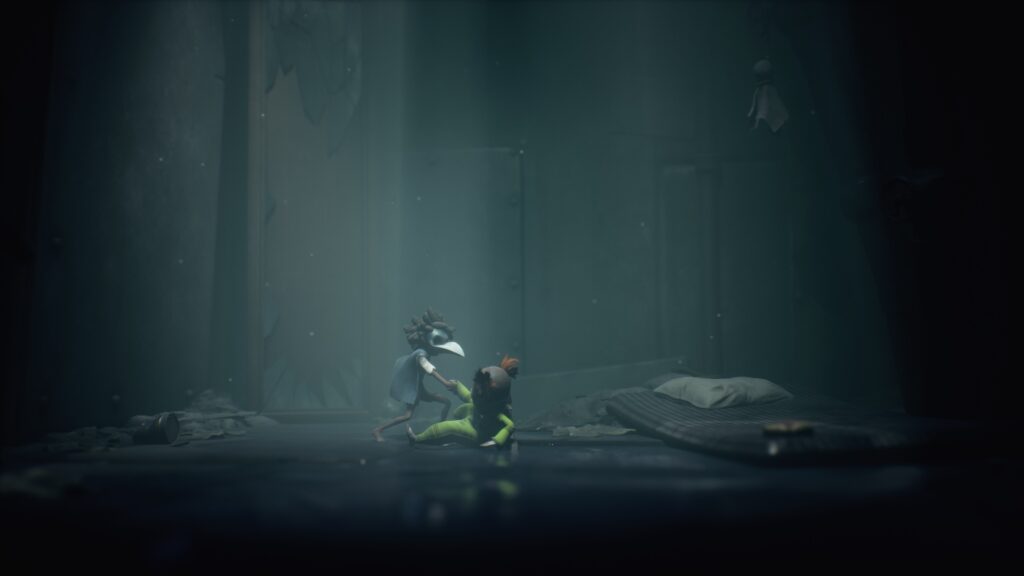
I played it next to my girlfriend, and more than once I heard her quietly go “Wow,” mostly because of how much care went into every small detail. I’ll admit, I was sceptical at first about how Supermassive would carry on what Tarsier started, but in terms of presentation, they absolutely nailed it.
We would like to thank Bandai Namco Europe for providing us with a copy of the game for review purposes.
Little Nightmares III (PlayStation 5)
Little Nightmares III, though coming from a different studio this time around, perfectly captures the haunting charm of these tiny, twisted, and brutal nightmares. It’s the most gameplay-rich entry in the series so far, a real breath of fresh air for everyone who’s been craving another dive into this eerie little universe. Low and Alone are beautifully realized and fit seamlessly into the game’s unsettling world. Whether you play solo or with a friend, Little Nightmares III is one of those games you simply have to experience.

